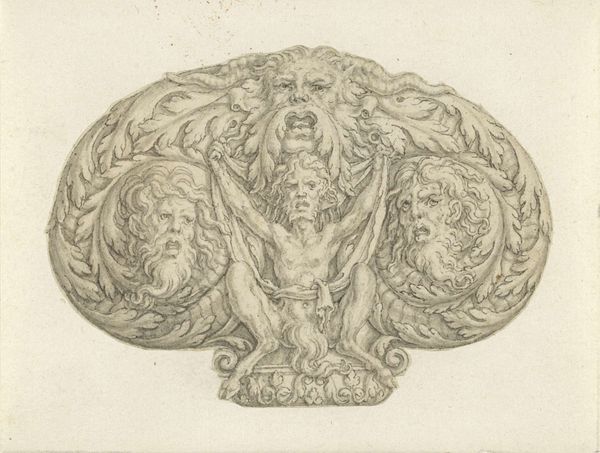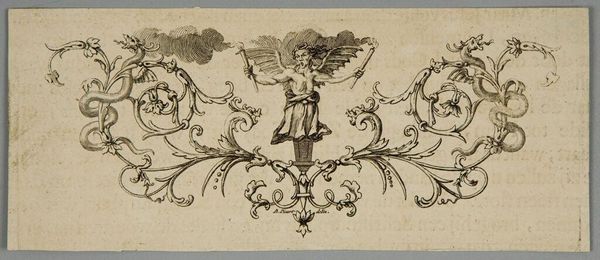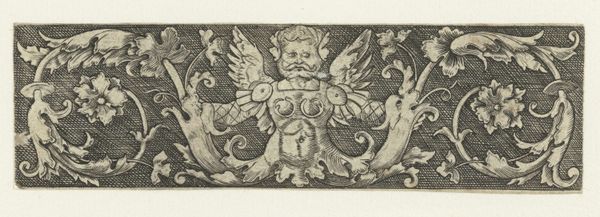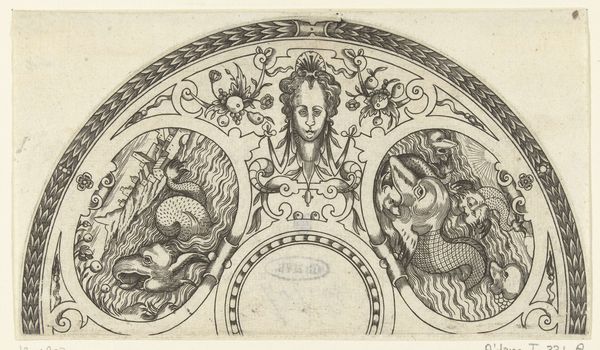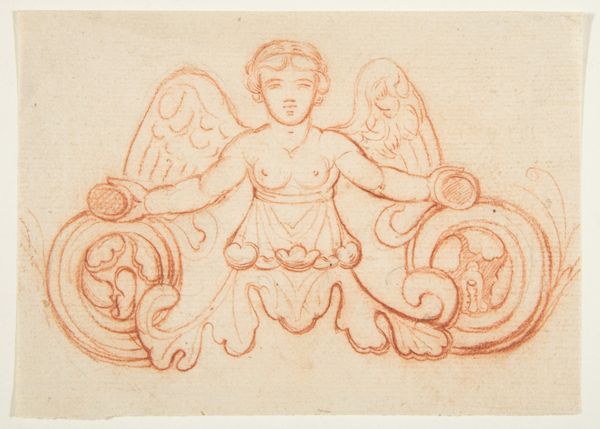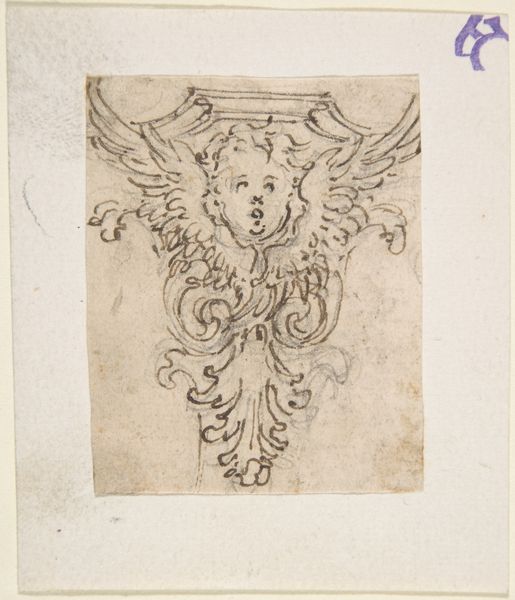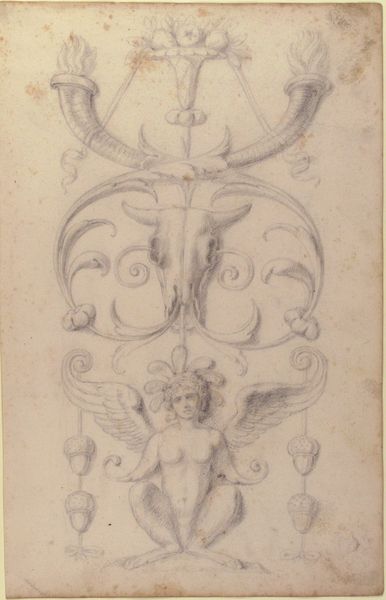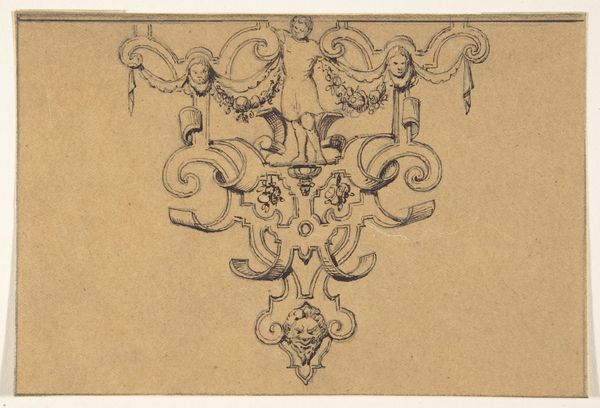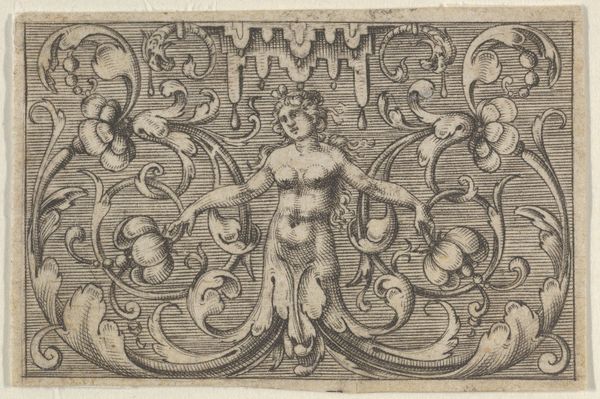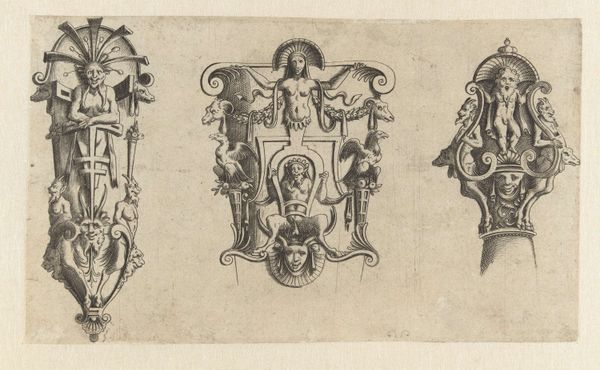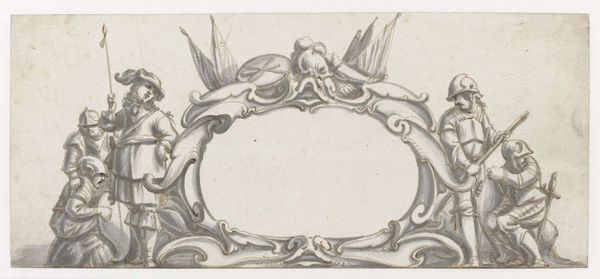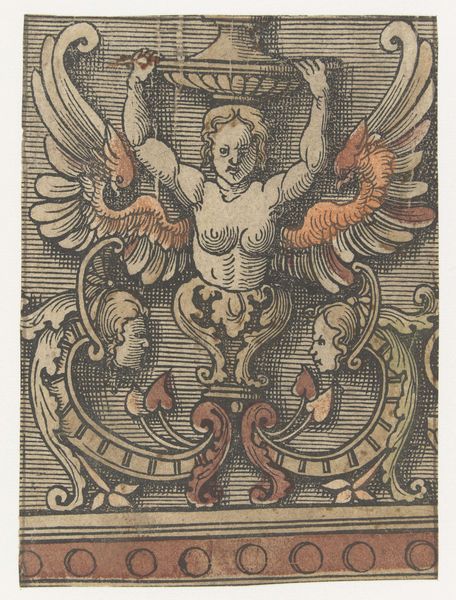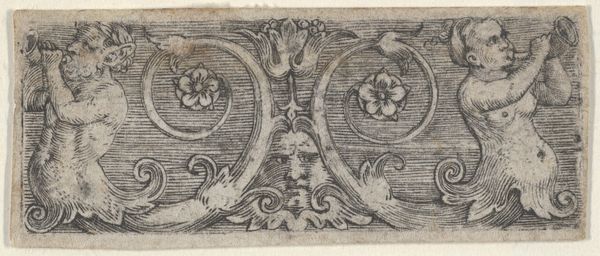
Fragment of a horizontal frieze with female bust in the center, garlands, anthemia, cut from a plate of border segments 1490 - 1500
0:00
0:00
drawing, print, engraving
#
drawing
#
pen drawing
#
head
# print
#
figuration
#
form
#
line
#
italian-renaissance
#
engraving
Dimensions: Mount: 16 × 9 11/16 in. (40.6 × 24.6 cm) Sheet: 1 7/8 x 6 5/8 in. (4.7 x 16.8 cm)
Copyright: Public Domain
Curator: Here we have "Fragment of a horizontal frieze with female bust in the center, garlands, anthemia, cut from a plate of border segments," a print by Francesco Rosselli, created between 1490 and 1500. It's an engraving, part of the Italian Renaissance. Editor: Immediately, what strikes me is the rigorous symmetry. The repetition of the floral and figural elements, creating a clear rhythm. And of course, the graphic, linear quality due to the medium. Curator: The frieze as a whole offers a symbolic language inherent to Renaissance decorative arts. The female bust represents beauty, knowledge, or possibly virtue. Her winged elements evoke notions of inspiration or divinity. The garlands? Triumph and celebration. It is so deliberate. Editor: Deliberate indeed! Consider the very clear contrast of textures created through the linework - look how Rosselli manipulates density to create a sense of depth. There is something ornamental in the layering, creating movement while trapped in rigid lines. Curator: Precisely. The motifs Rosselli used weren't chosen at random. They reflected prevailing Humanist values and Neoplatonic ideals – finding inspiration in classical antiquity and giving it new visual form for their contemporary audiences. Friezes like these were integrated into building designs but also furniture, offering encoded values. Editor: I'm fascinated by that intersection of art and craft, design, and functionality. This piece isn't just an image. It's an element intended to transform an interior space, to shape lived experience by this repetition you describe. Curator: Rosselli's skillful blend of traditional symbolism with innovative design thinking. He's connecting present to the classical past, not merely imitating but reinvigorating. Even this very fragment contains cultural memory! Editor: Thinking about the "fragmentary" nature mentioned in the artwork's title, it underscores the partial nature of the present. But I think the choice to feature the female bust at the center as it evokes ideals and beauty shows the permanence that design tries to find for itself, its intent of transcend transient time periods through lasting visual composition. Curator: So we find, once again, the fascinating conversation of how art helps us remember and reimagine. Editor: Right, while visually building a lasting artifact within interior space.
Comments
No comments
Be the first to comment and join the conversation on the ultimate creative platform.
